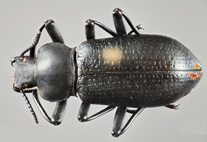Abstract
Histiotus are vespertilionid bats endemic to South America, easily recognized by its very long ears. During a twelve-month bat inventory in northeastern Brazil, eleven specimens of Histiotus were collected with a unique combination of characters that did not match those of any known species. In this paper, we describe these specimens as a new species. Histiotus sp. nov is distinguished from its congeners by its pale transparent wings and translucent ears, a triangular-shaped ear with a prominent lobe in the inner border connected by a band (~4 mm) across the forehead; its general golden-brownish body color and well-marked bicolor dorsal hairs. Its geographic distribution is unique among vespertilionids, arranged in a northeast-southwest diagonal across South America, includes the Caatinga and Cerrado of Brazil and Chaco of Bolivia. The available data suggest a seasonal reproductive pattern, with births occurring in the mid to late rainy season.

